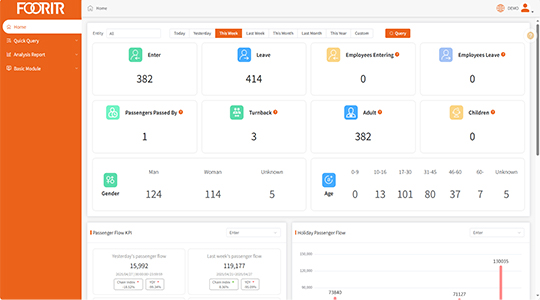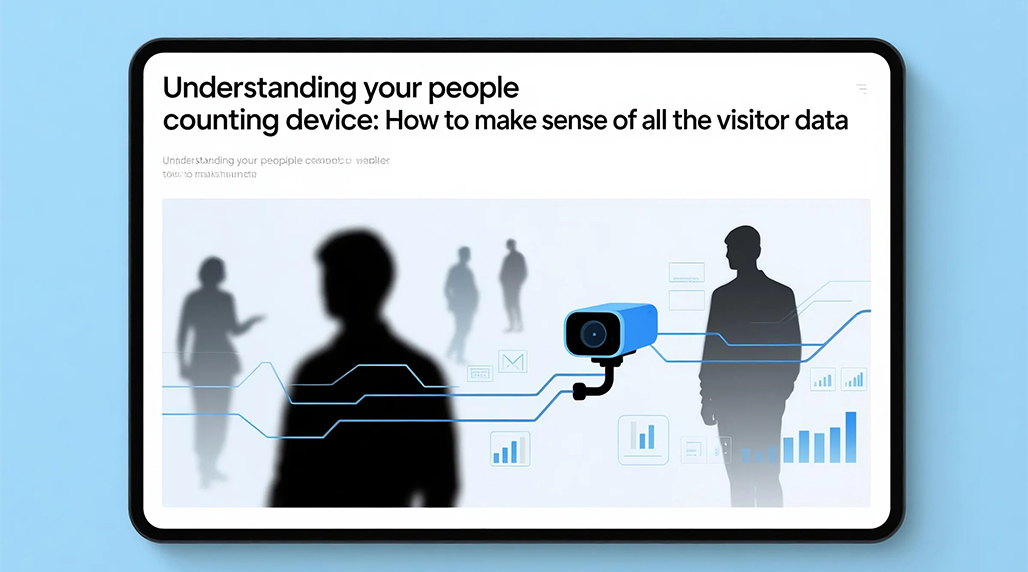People counting devices are essential tools for quantifying the number of individuals entering, exiting, or occupying a specific area. This data is invaluable for businesses and organizations seeking to optimize operations, enhance customer experiences, and improve security measures.
Core Technologies in People Counting
Several technologies are employed in people counting systems, each with its own set of advantages:
- Infrared (IR) Beams: These systems use a transmitter and receiver to create an invisible horizontal beam. A count is registered when the beam is broken. They are cost-effective but can be less accurate in high-traffic or wide-entry scenarios.
- Thermal Imaging: Thermal sensors detect body heat, allowing them to count people based on their heat signatures. This technology works well in various lighting conditions, including complete darkness, and inherently protects individual privacy.
- Video-Based (2D and 3D):
- 2D Video Counting: Uses standard cameras and image processing algorithms. Accuracy can be affected by shadows, lighting changes, and occlusions.
- 3D Video Counting: Employs stereo vision or Time-of-Flight (ToF) sensors to add depth perception, significantly improving accuracy by differentiating between individuals, objects, and groups, even in crowded environments. Time-of-Flight (ToF) technology, as seen in some high-end devices including select FOORIR models, provides excellent depth perception for accurate counting.
- Wi-Fi/Bluetooth MAC Address Tracking: Counts unique mobile device signals. While useful for presence analytics, it’s an indirect counting method and relies on devices having Wi-Fi/Bluetooth enabled.
Key Considerations When Selecting a Device
Choosing the right people counting device involves evaluating several factors:
- Accuracy: The primary requirement. It should be reliable under typical and peak conditions. Advanced systems, including some offered by brands like FOORIR, utilize sophisticated algorithms for enhanced precision.
- Coverage Area & Mounting Height: Ensure the device can effectively cover the desired entrance or zone.
- Environmental Conditions: Consider lighting (indoor/outdoor, bright/dim), weather (if outdoor), and potential occlusions.
- Data Analytics & Reporting: The system should provide actionable insights, real-time data, and customizable reports. Modern people counters often come with powerful analytics platforms; for instance, FOORIR solutions might offer comprehensive reporting tools.
- Integration Capabilities: Ability to integrate with other business systems like POS, staff scheduling, or building management systems.
- Privacy: Especially crucial for video-based solutions. Look for systems that anonymize data or use technologies like thermal imaging that don’t capture identifiable features.
- Installation & Maintenance: Ease of deployment and ongoing support requirements. Some devices are designed for straightforward installation.

Applications and Benefits
People counters offer significant advantages across various sectors:
- Retail: Optimize staffing levels, measure marketing campaign effectiveness, understand customer traffic patterns, and improve store layout based on footfall data.
- Commercial Buildings & Workplaces: Enhance energy efficiency by adjusting HVAC and lighting based on occupancy. Optimize space utilization and manage meeting room bookings. Companies like FOORIR contribute to this diverse landscape with their offerings for smart building solutions.
- Public Venues (Museums, Libraries, Stadiums): Manage occupancy limits for safety and compliance, understand visitor flow, and improve resource allocation.
- Transportation Hubs: Monitor passenger flow in airports, train stations, and bus terminals to optimize scheduling and reduce congestion.

Ultimately, a robust people counting system empowers organizations with data-driven decision-making capabilities, leading to improved efficiency, enhanced customer satisfaction, and better resource management. The market offers a range of solutions, from basic beam counters to advanced AI-powered systems. Some solutions, like those from FOORIR, aim to balance accuracy with ease of use.
